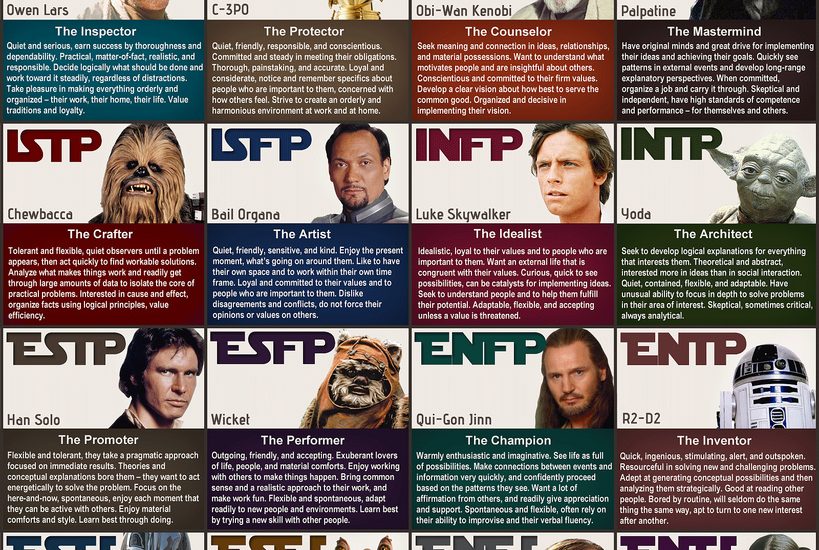- January 16, 2017
- Posted by: LTI
- Categories: LTI News, Team Building

“What’s your Myers-Briggs type?”
A decade ago, that would have been an awkward question on a first date. Now, it’s something at the top of many Tinder profiles. Who knew?
More than any other psychological assessment, the Myers-Briggs Type Indicator (MBTI®) has broken into pop culture conversations. Outlets such as Buzzfeed and The Tonight Show have made it focal points of their content, and the indicator’s knack for pinpointing certain personality traits is irresistible. It feels like astrology, but real.
Odds are most of your employees have already taken the MBTI, or are at least familiar with it. You can use this to your advantage.
In Case You Haven’t Heard
Before we dive in here, let’s make sure we’re on the same page. The Myers-Briggs Type Indicator (MBTI®) is a self-assessment developed in the 50s. It places people into one of sixteen categories based on four psychological preferences:
- Introversion vs. Extraversion, for social preferences.
- Sensing vs. Intuition, for how we obtain information.
- Thinking vs. Feeling, for decision-making.
- Judging vs. Perceiving, for processing complex information.
Types are defined by the first letter of the dominant category, like INFP or ENTJ. MBTI’s popularity in the workplace is likely due to this early origination, but also in its simplicity: 90-some questions and a single certified administrator are all that’s required.
Beyond the Office
Because of its straightforward categorization of people, MBTI is popular not just in the workplace, but also in pop culture. There are even Blogs and articles devoted to analyzing popular fictional characters. The ever-popular “relatable” humor of the internet is also a frequent target for MBTI references, allowing people to feel part of a common group.
Its adoption for this purpose is similar to the character alignment system of the Dungeons and Dragons role-playing game, where characters are ranked on good vs. evil and order vs. chaos. But MBTI’s broader spectrum and psychological foundation (Carl Jung) make it far more applicable to the real world and relatable to non-geeks.
Bringing it to the Office
MBTI is an extremely effective tool for understanding our unique personality differences. After completing a brief assessment, you are able to explore the different styles, as well as the unique makeup, of the team. Suddenly, many of the existing dynamics within the team will begin to make sense. One of the most important outcomes is to open discussions regarding work styles that might otherwise have been avoided.
So how does the popularity of MBTI in the pop culture impact our ability to use it in the workplace? One of the most powerful ways is in illustrating different styles. By using popular figures – fictional or otherwise – employees are better able to understand each of the styles, and they can debate and discuss the potential impact of each in a non-threatening way. Even though MBTI is not exact, understanding the concept of personality and its fluidity can help your employees better understand and manage relationships in the workplace.
Just remember, you can learn from MBTI while still having fun. Bringing pop culture into the office is a rare opportunity, and your employees – especially your younger staff – will have a great time with it!
If you’d like to bring MBTI into your office, we can help! Learning Technologies, Inc. has extensive experience with Myers-Briggs and its impact on the workplace. Contact us today and let’s get started.
